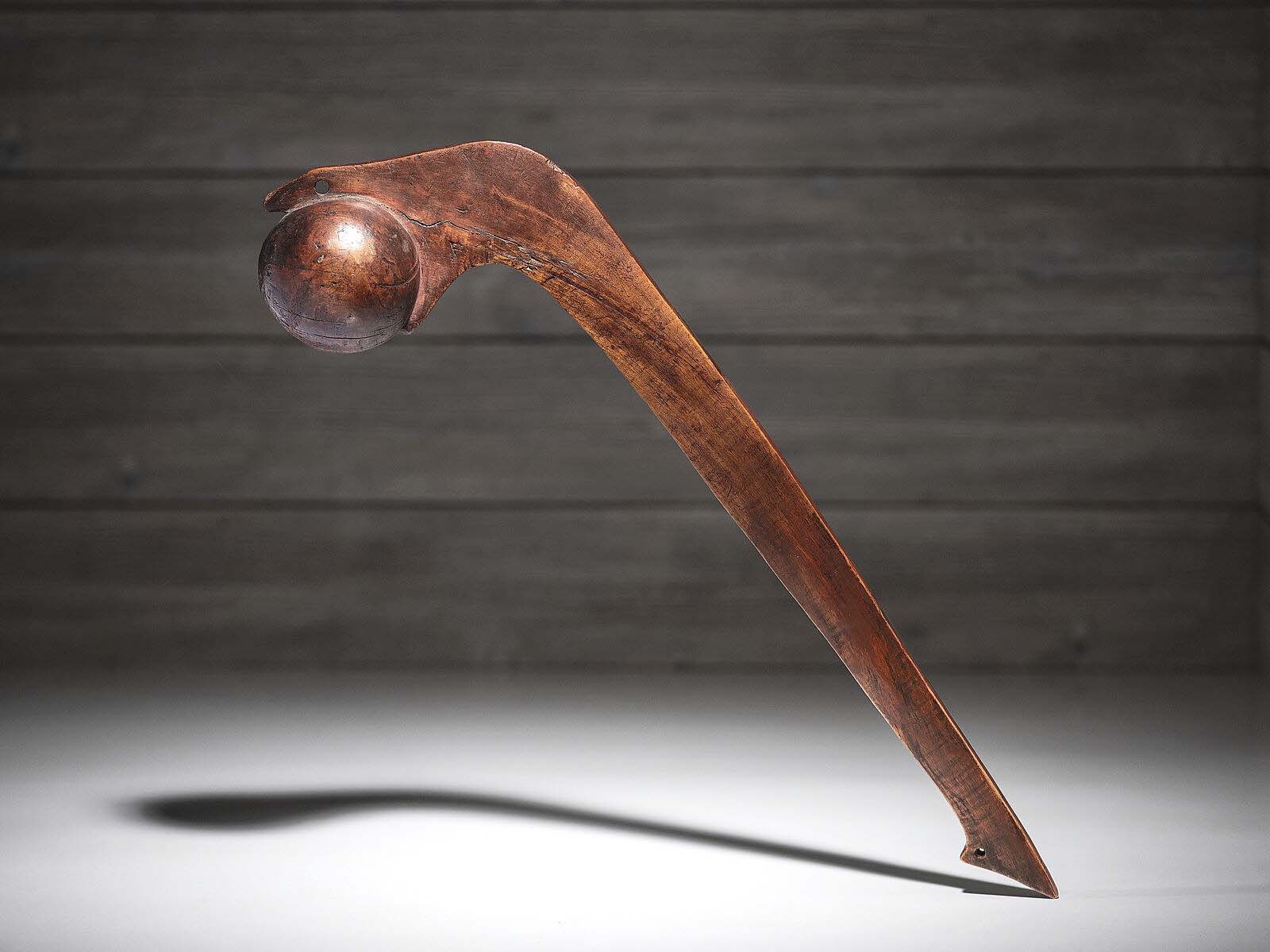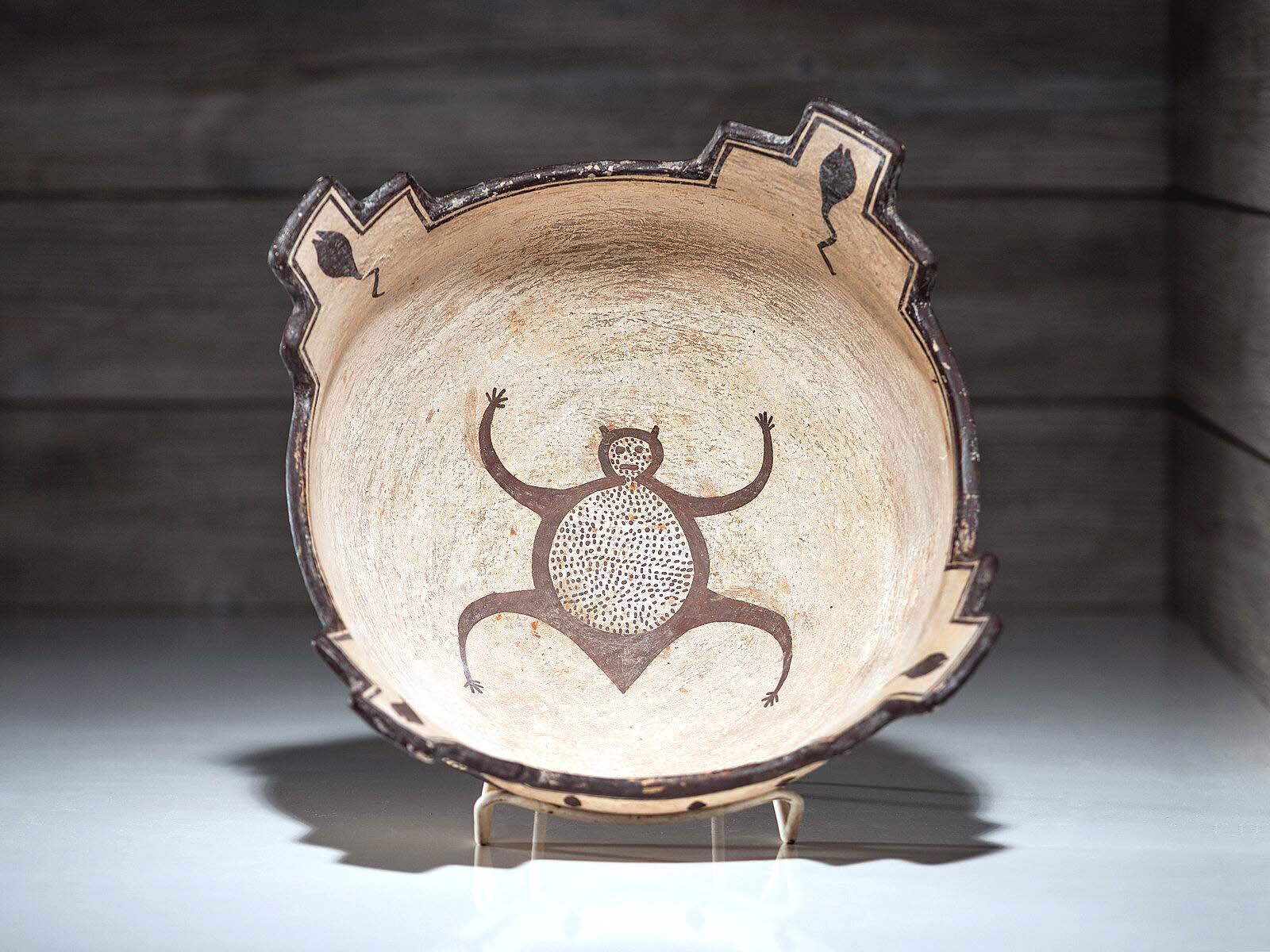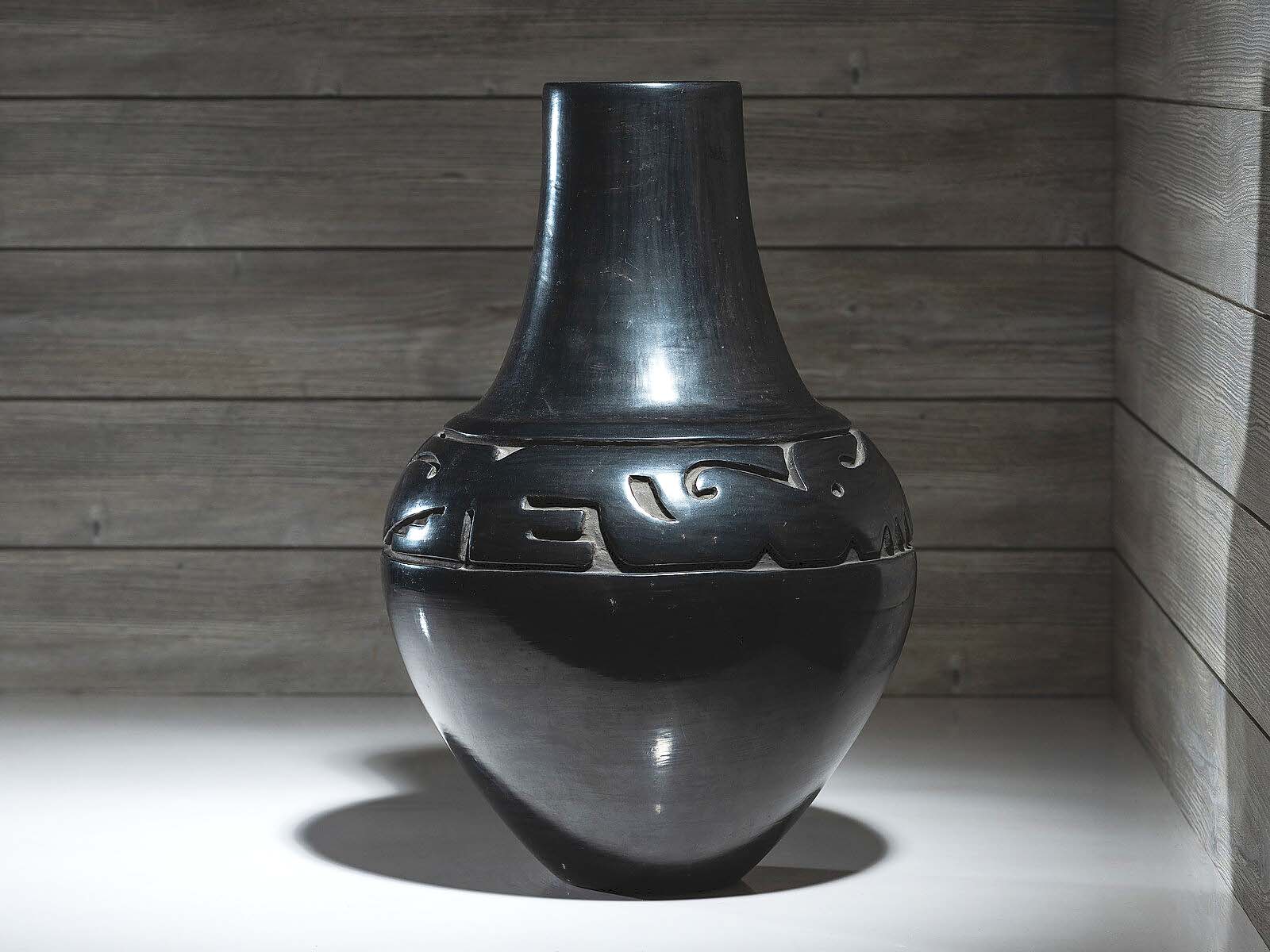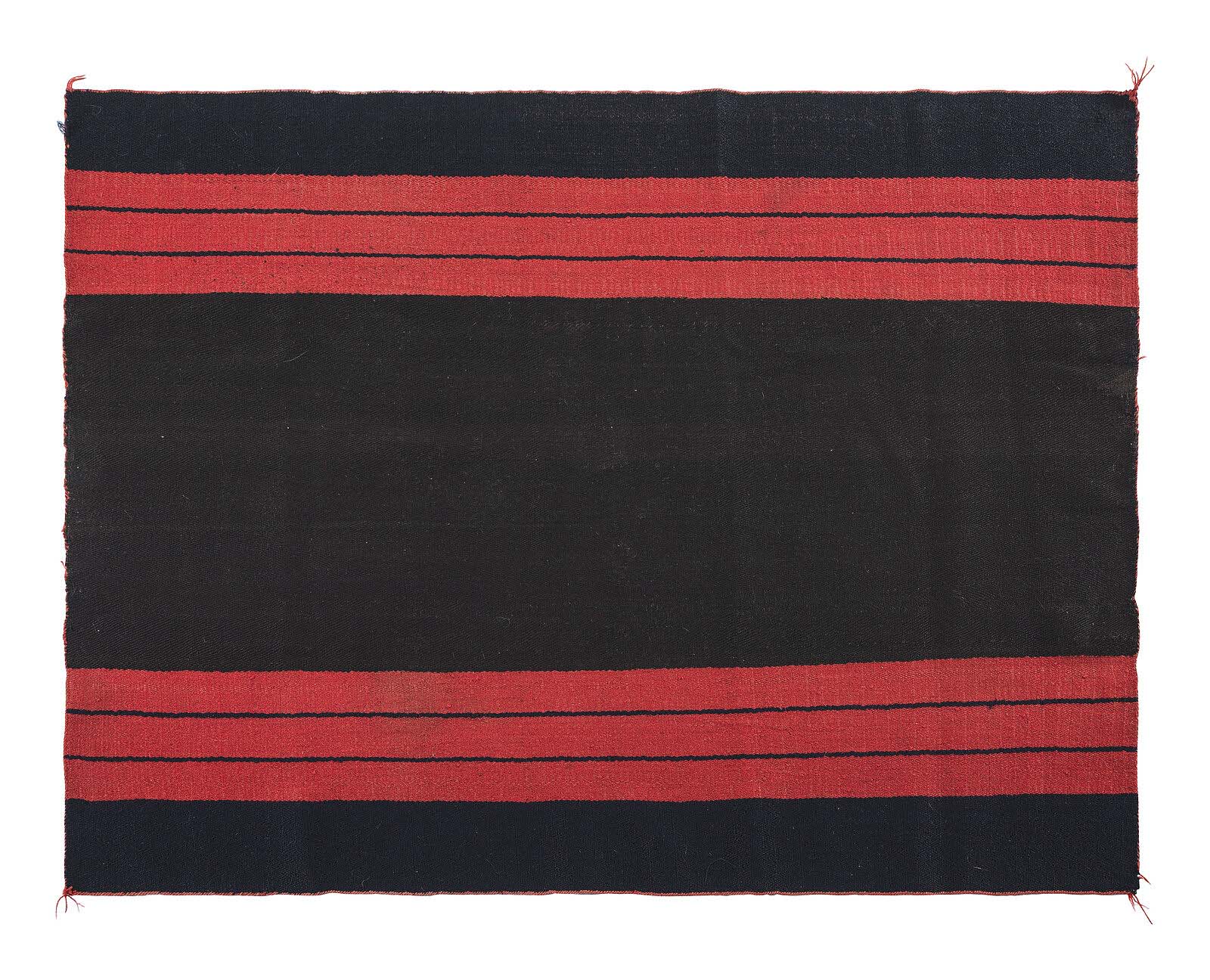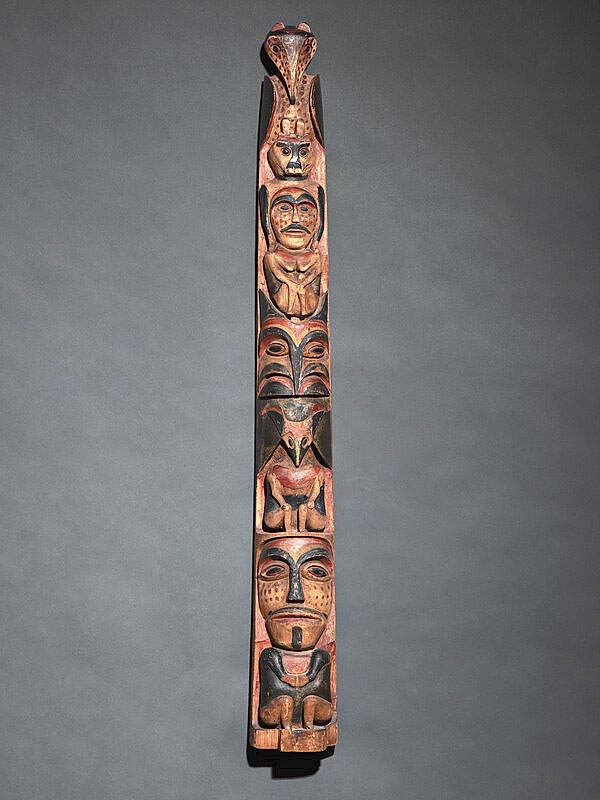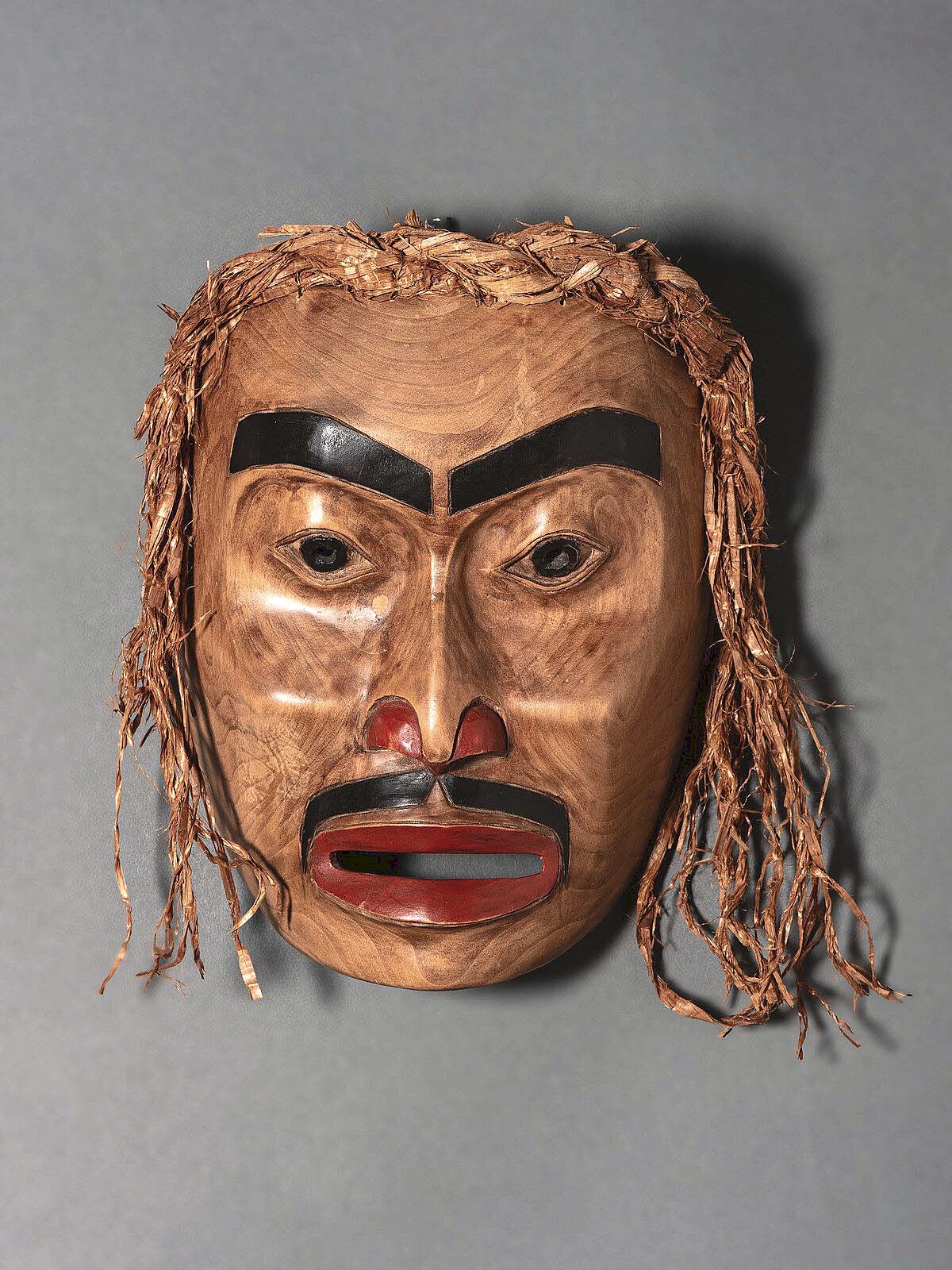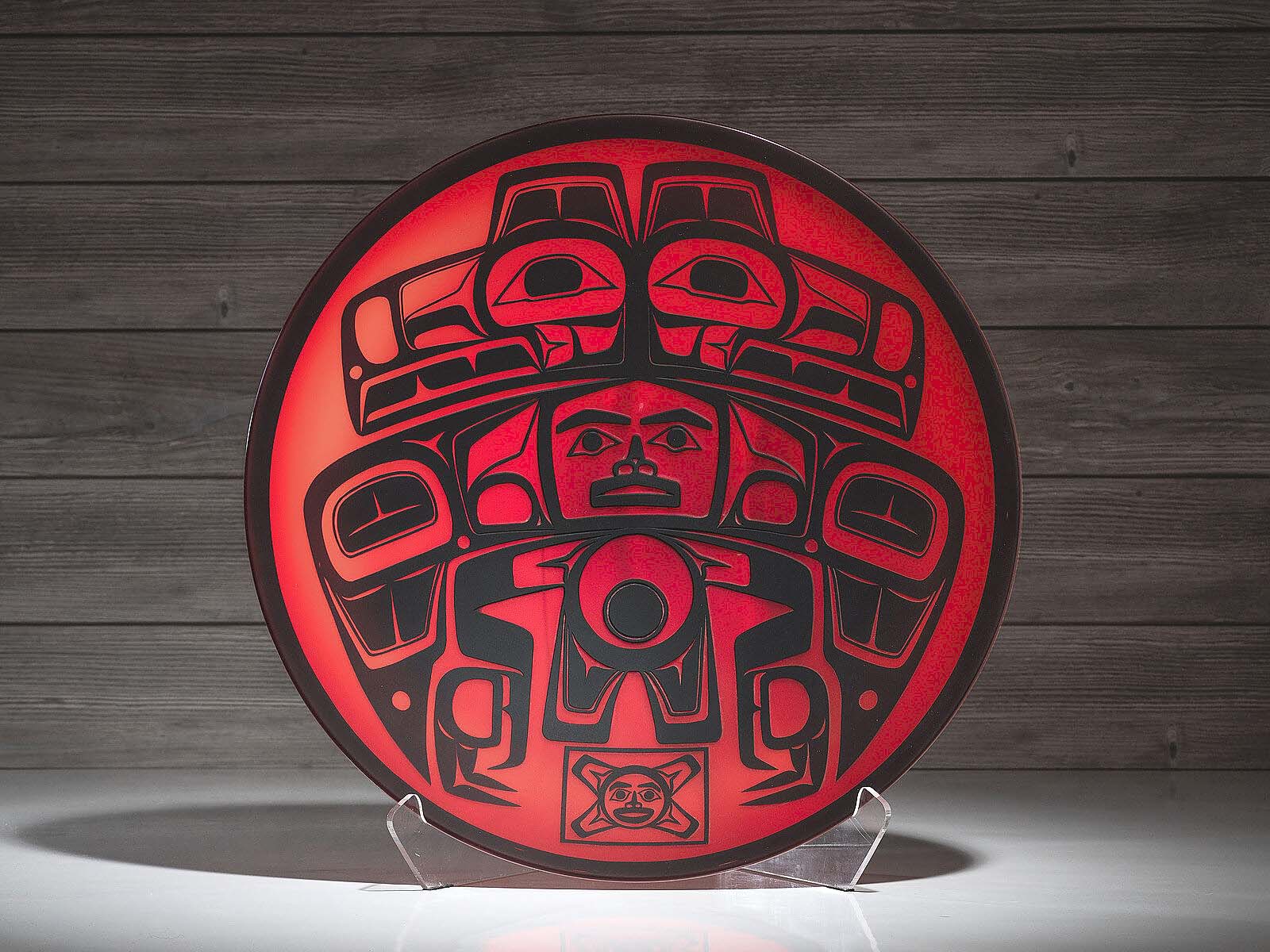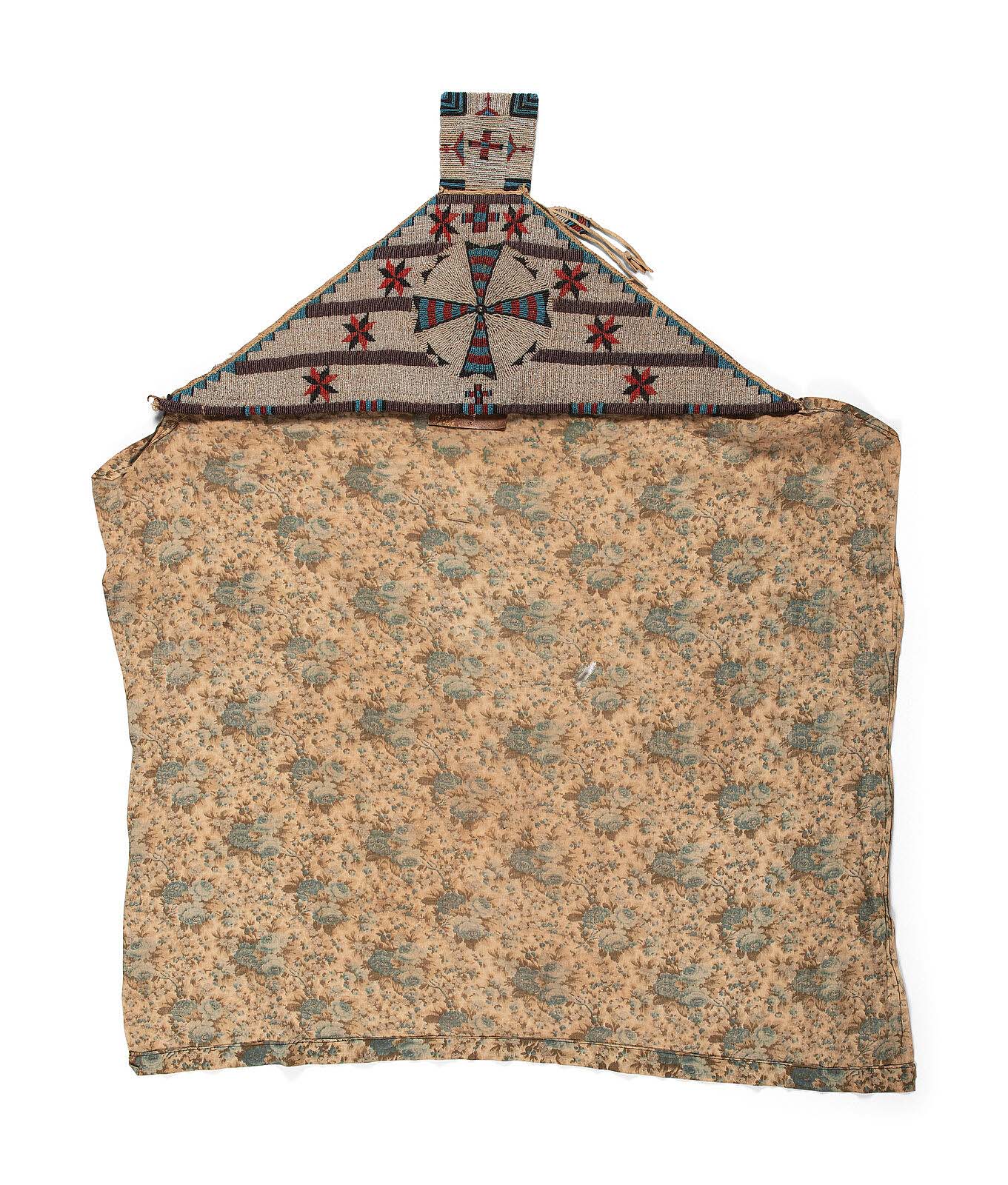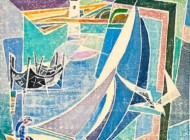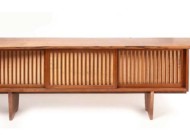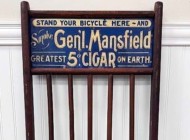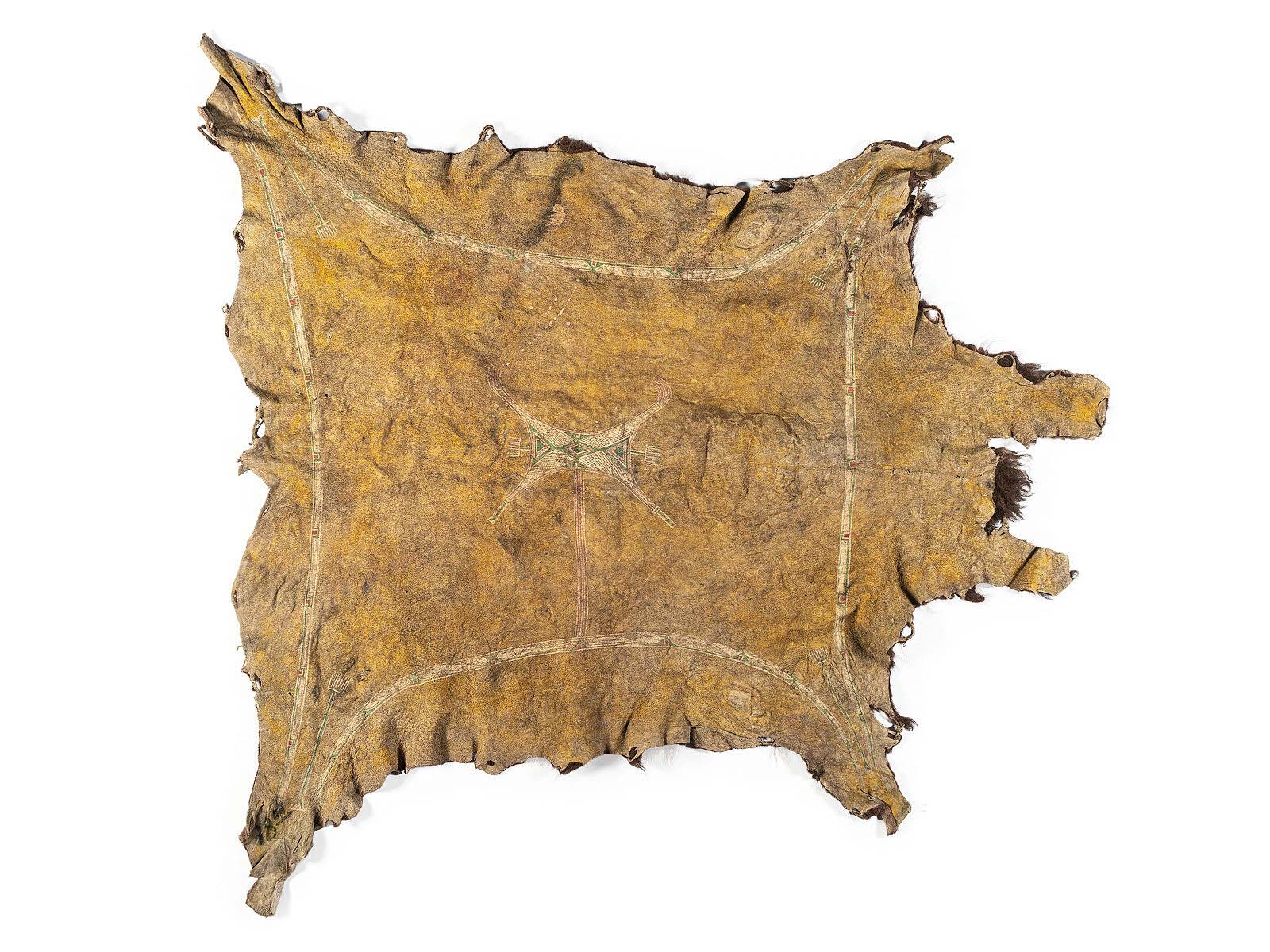
A private collector bidding by phone paid $41,275 for this early Southern Plains painted buffalo hide robe that was probably made by a Comanche woman in the mid-Nineteenth Century and related to two examples in published collections. It was the highest-priced lot in the sale ($15/25,000).
Review by Madelia Hickman Ring
CINCINNATI, OHIO — Freeman’s | Hindman presented collectors of Native American works of art two opportunities to flex their purchasing power. On April 19, a 264-lot sale featuring the collection of Dr Martin Gingras (Rochester, N.Y.), the Denver, Colo., estate of Ronald Veenstra, a private collection in Chicago and CulturalPatina. Including works from both the Eighteenth and Nineteenth Century, the sale expanded into modern and contemporary Native and Indigenous artists. An online-only sale that closed on April 22 featured an additional 401 lots. By the time the hammer came down on the final lot, the house had accumulated $660,400 with a sell-through rate of more than 94 percent. Strong results were realized in a broad span of objects from a diverse spectrum of Native cultures, suggesting a vibrant market overall, which Danica Farnand, Freeman’s | Hindman’s vice president and head of the Native American art department, confirmed.
“I was very pleased with the results of this auction and the enthusiastic bidding across categories. The auction had a high bidder registration. We offered some early Plains material that sold very well. We also incorporated modern and contemporary Native works into this sale, which were greeted with equal spirit. Having an auction with both older and newer works helps show the evolution of Indigenous artistry.”
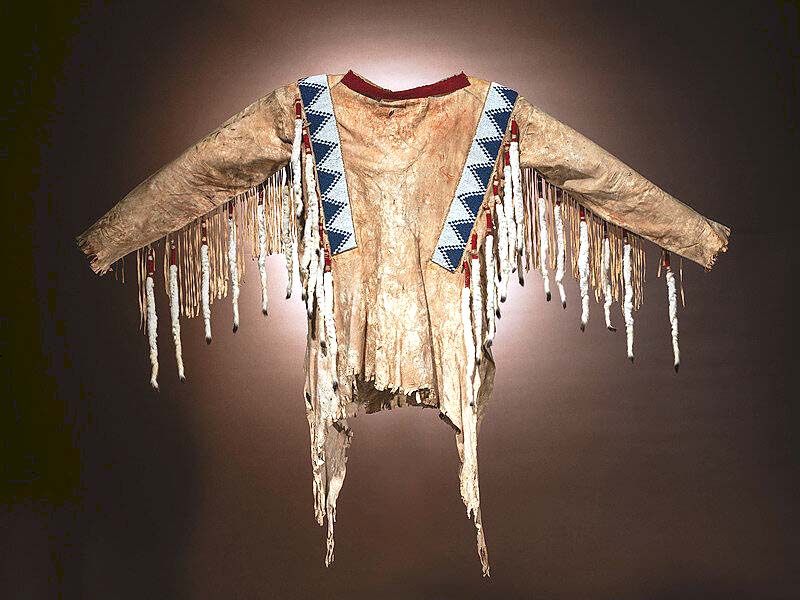
White ermine tails wrapped with red wool and blue and white beaded panels embellished this late Nineteenth Century Blackfeet beaded hide shirt that earned $25,400 from a private collector and a second-place finish ($25/35,000).
An early Southern Plains painted buffalo hide robe won the sale’s “top lot” distinction with an estimate-exceeding price of $41,275. The tanned hide was decorated with a “border and hourglass” pattern executed in red and green pigments on an allover yellow ground. According to the cataloging for the lot, robes such as this one were worn and painted by women and are usually associated with the Comanche or Arapaho. It was cataloged as “likely Comanche” based on its comparison to two published examples: one in First American Art: The Charles and Valerie Diker Collection of American Indian Art (Bernstein, McMaster and Ash-Milby eds. 2004) and the other in Eva Fognell’s (ed), Art of American Indians: The Thaw Collection (2010). It had descended in the family of Uriah Updegraff and Ann Covode and found a new home with a private collector bidding on the phone.
A striking beaded hide shirt from the Blackfeet people, late Nineteenth Century, rose to a second-place finish when a phone bidder and private collector won it for $25,400. It had provenance to dealer Bruce Johnson. Equally stunning was an early Twentieth Century Sioux hide dress that had ornamental beadwork in the form of crosses, American eagles and modified US shields traded hands for $10,795, more than tripling its high estimate.
Beading was the primary vehicle for decoration on a pair of batwing chaps, made in the Twentieth Century by Hermann Heiser of Denver, Colo. Thread-sewn on hide applied to leather chaps, the pair was vibrantly decorated with horse tracks, morning stars, tipis, crosses and four American flags. More than doubling their $3/5,000 estimate, the chaps realized $11,430 from a Western gallery, a price high enough to lead the online session.
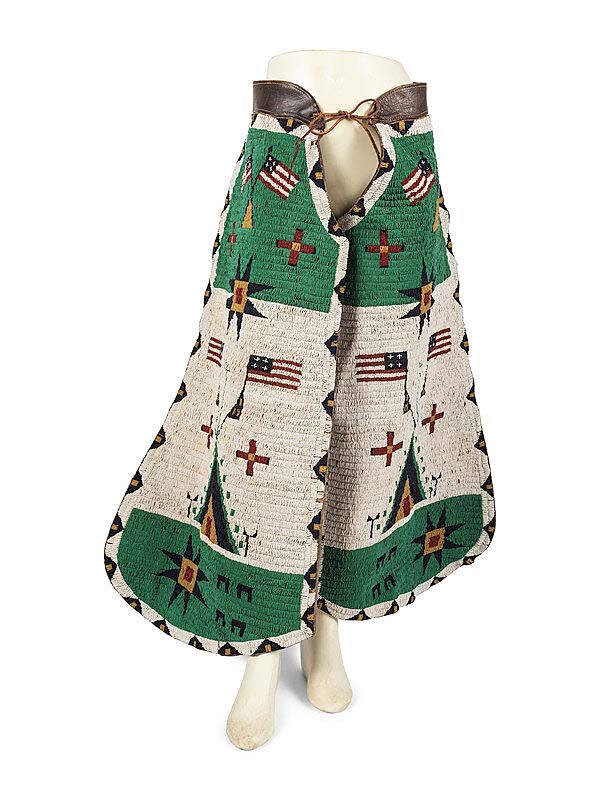
Vibrant beadwork embellished this pair of chaps that led the online session with a $11,430 result. They were made by Hermann Heiser of Denver, Colo., in the Twentieth Century, and were acquired by a Western gallery ($3/5,000).
Modern and contemporary Indigenous makers found high demand for their works. Such was the case with a human face mask made in 1972 out of alder by master carver, Freda Diesing (Haida, 1925-2002). It also exceeded expectations when it sold for $15,240 to an East Coast trade buyer. A red and black overlaid glass feast bowl, made in 1999 by contemporary Tlingit artist Preston Singletary (b 1963), was one of the highlights from the Gingras collection and doubled its estimate to sell for $12,065, to a private collector.
Contemporary potter Margaret Tafoya (Santa Clara, 1904-2001) was represented by six lots across both sessions. Two pottery vases, one in redware, the other in blackware, each depicted Avanyu, a water serpent deity, and each sold for $7,620.
The Lammers Trading Post in Hardin, Mont., has been in business since 1916 and owned and operated by the same family for five generations. Several works in the sale had descended in the family, including a Sioux claystone effigy pipe bowl that was carved with the animal motifs of a bull elk, turtle, butterfly, spider and a woman carrying a bucket that related to a similar Lakota example in the collections of the Minneapolis Institute of Art. Bidders were tempted by its $1/1,500 estimate but an international buyer prevailed to take it for $13,970.
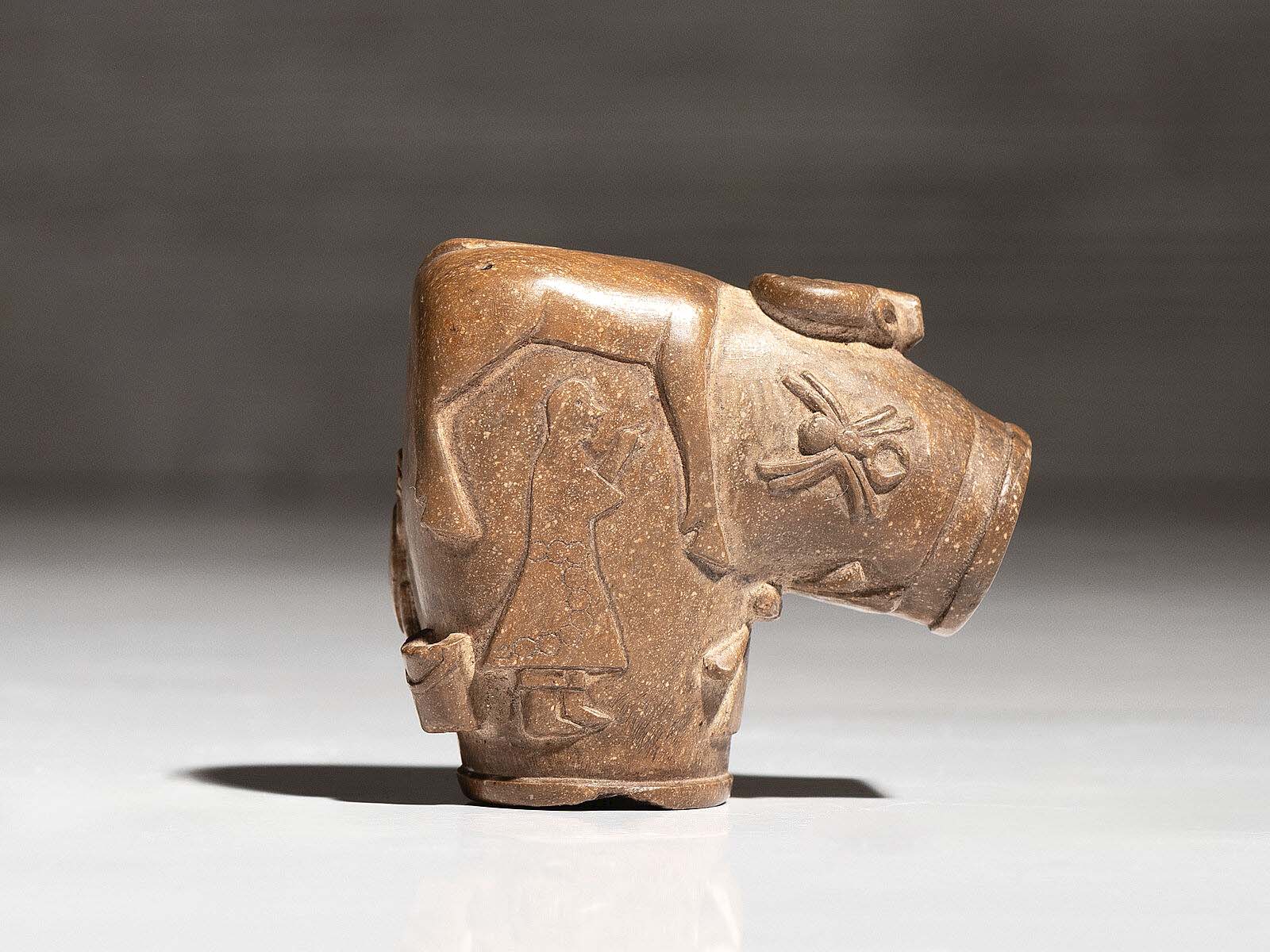
This Sioux claystone effigy pipe bowl featured several figural carved motifs and dated to the second half of the Nineteenth Century. It had provenance to the family that owned the Lammers Trading Post and sold to a private collector overseas for $13,970 ($1/1,500).
Another lot with provenance to the Lammers Trading Post was a late Nineteenth Century Cheyenne beaded soft cradle. Beaded with a central Maltese cross and Valero stars on a canvas ground, with a floral cotton cloth body, it nearly doubled its high estimate and sold for $10,160 to a private collector.
Traditional forms remain popular with buyers and provenance and exhibition or publication history continues to be an important factor in achieving a strong price. Standing nearly 44 inches tall was an early Twentieth Century Northwest Coast carved and painted model totem pole that rose to $11,430, and a Great Lakes effigy ball club that was dated to the Eighteenth Century and smashed its $5/7,000 estimate with a $10,795 result. The club had been published in Douglas Ewing’s Pleasing the Spirits (New York, 1982). Not only did it have provenance to the collection of Herbert G. Wellington, but it had been auctioned in 2012 by Sotheby’s New York, where it realized a similar result of $10,625 against an identical $5/7,000 estimate.
Textiles were in plentiful supply in both sessions and met a perennial demand. The category reached its apex in a late Nineteenth Century Navajo manta made of hand-spun wool dyed by indigo, cochineal and black that surpassed its estimate when a private collector and dealer paid $10,160 for it.
Prices quoted include the buyer’s premium as reported by the auction house. For more information, 312-280-1212 or www.hindmanauctions.com.

